
Predicting the Woman Hairstyles of the Future: 7 Trends Shaping the Next Decade | Tech & Sustainability
12 min read

12 min read

12 min read

14 min read
Download our app to instantly see how you'd look with any hairstyle or color
Get the App
14 min read

13 min read

12 min read
Download our app to instantly see how you'd look with any hairstyle or color
Get the AppGone are the days when a haircut was simply about length. Today, a truly transformative hairstyle is defined by its personality—its texture, its movement, and its ability to reflect a unique style. The secret behind these dynamic, effortlessly chic looks lies in the mastery of advanced cutting techniques for creating texture and movement. While a standard cut can provide a solid shape, it's the sophisticated, artistic techniques applied by a skilled stylist that elevate a haircut from ordinary to extraordinary. These methods are designed to manipulate the hair's weight, soften lines, and build dimension from within, resulting in a style that looks just as stunning air-dried on a Tuesday as it does freshly styled from the salon.
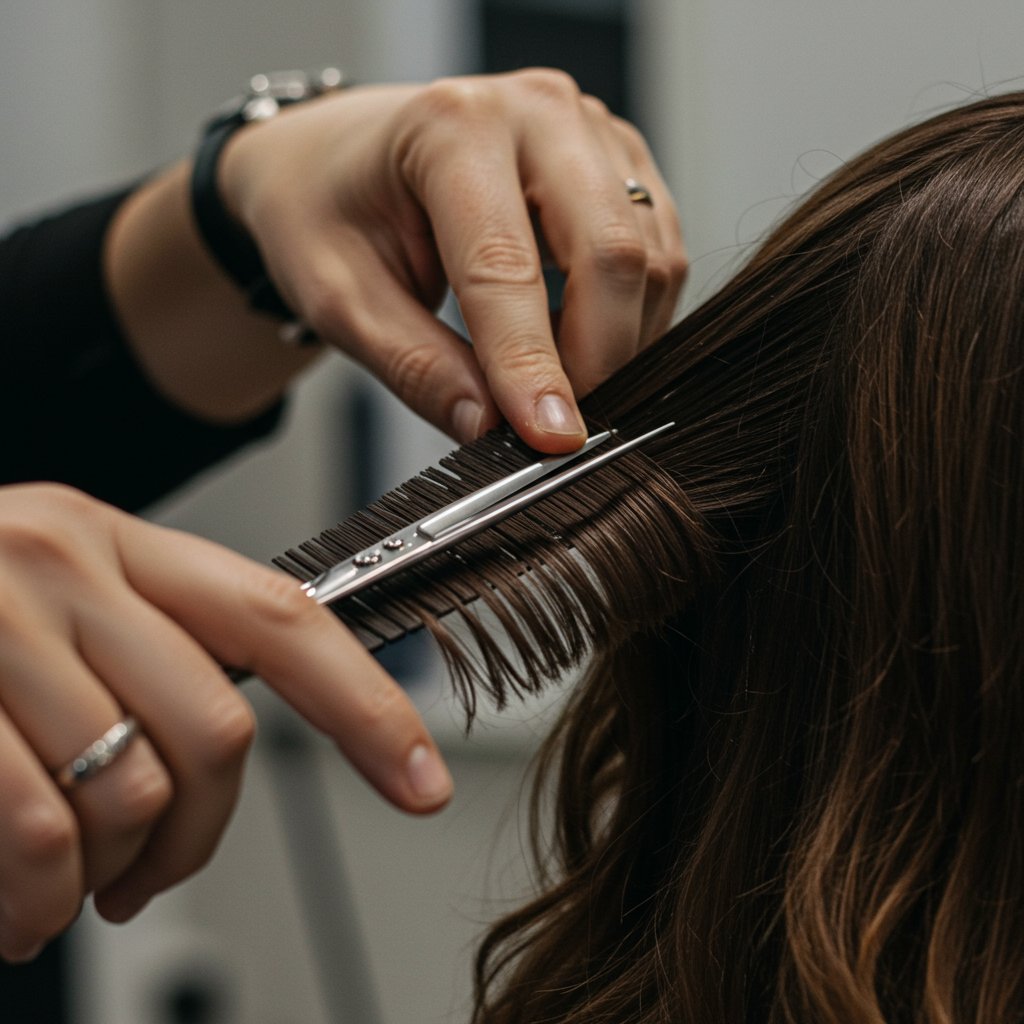
Understanding these techniques empowers you to better articulate your hair goals during a consultation. It's the difference between asking for 'layers' and being able to discuss whether you want the seamless blend of slide cutting or the hidden volume of interior layering. This knowledge bridges the gap between your vision and the stylist's execution, ensuring the final result is a personalized masterpiece. This guide will delve into the world of advanced texturizing, exploring the specific methods stylists use to craft everything from soft, wispy ends to bold, voluminous shapes. Prepare to discover the artistry that turns a simple haircut into a living, breathing style full of life and movement.
In the landscape of modern hair fashion, structure and form are only half the story. The other, arguably more important, half is the interplay of texture and movement. A haircut with excellent texture feels lighter, appears more voluminous, and moves with a natural, fluid grace. It catches the light in different ways, creating dimension and visual interest that a one-dimensional, blunt cut simply cannot achieve. This focus on dynamism is a direct response to our desire for versatile, low-maintenance styles that embody a 'lived-in' aesthetic. People want hair that looks intentional yet effortless, a goal achieved primarily through strategic texturizing.
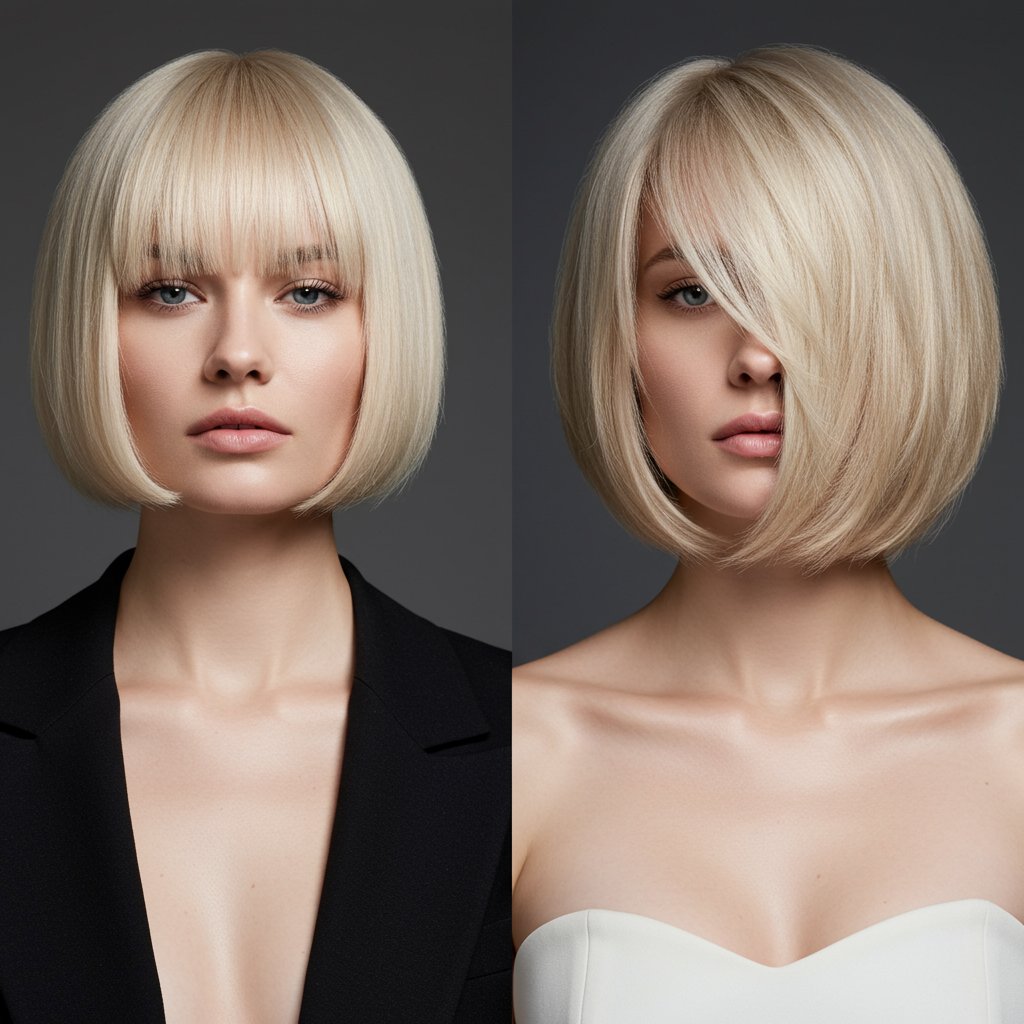
Different hair types benefit from these techniques in unique ways. For those with fine hair, texturizing can create the illusion of density and volume, preventing the hair from falling flat. Techniques like interior layering can build lift at the root without sacrificing precious length. Conversely, for thick or coarse hair, advanced cutting techniques are essential for removing excess bulk and weight, which can otherwise make hair feel heavy and unmanageable. Methods like channel cutting or deep point cutting can de-bulk the hair from the inside out, allowing it to move freely and fall into a more flattering shape. For curly and wavy hair, specialized techniques like twist cutting can enhance the natural pattern, reduce frizz, and create beautifully defined, separated curls.
Ultimately, the goal of incorporating texture and movement is to work with the hair's natural tendencies, not against them. A well-executed textured cut grows out more gracefully, requires less daily styling effort, and adapts to various looks with ease. It's a bespoke approach that honors the individuality of each person's hair, moving beyond a one-size-fits-all mentality to create a truly personalized and functional style. The shift towards texture represents a more sophisticated understanding of hair as a fabric to be shaped, molded, and brought to life.
Point cutting is one of the most fundamental and versatile advanced cutting techniques in a stylist's arsenal. Instead of cutting straight across the hair's ends to create a hard, blunt line, the stylist holds the shears perpendicular or at an angle to the hair section and cuts into the ends. This meticulous process creates a varied, textured edge rather than a solid one. It’s an art of subtlety, used to break up harsh lines, soften the perimeter of a haircut, and infuse a sense of airiness and movement into the style. It's the technique responsible for the soft, piecey finish on a chic bob or the feathered edges of modern layers.

There are several variations of this technique, each serving a distinct purpose. Shallow point cutting involves snipping just the very tips of the hair, which is perfect for gently diffusing a blunt line on fine to medium hair without removing significant weight. On the other hand, deep point cutting, also known as deep parallel point cutting, involves inserting the shears further into the hair section—sometimes an inch or more. This more aggressive approach is ideal for removing internal bulk from thick, heavy hair, creating significant texture and separation. A stylist might use this technique within the layers of a shag cut to achieve that signature choppy, rock-and-roll vibe.
Whether used on bangs to create a soft, sweeping effect or on the ends of long layers to encourage them to flick and move, point cutting is a testament to the importance of detail in hairstyling. It allows for a level of customization that a simple blunt cut cannot offer. By controlling the angle and depth of the cut, a stylist can precisely manage the hair's weight distribution, ensuring the final shape is both flattering and functional. It’s a foundational skill that separates a good haircut from a truly exceptional one.
For those who desire movement and reduced weight in their medium to long hair without the look of distinct, choppy layers, slide cutting is the ultimate solution. This elegant technique involves the stylist gliding partially open shears down the hair shaft from mid-lengths to ends. This motion gently removes weight and carves out long, seamless layers that blend invisibly into the overall style. The result is a fluid, cascading effect where the hair moves as a single, cohesive unit, full of body and swing. It's the secret behind the soft, face-framing pieces and flowing silhouettes often seen on the red carpet.
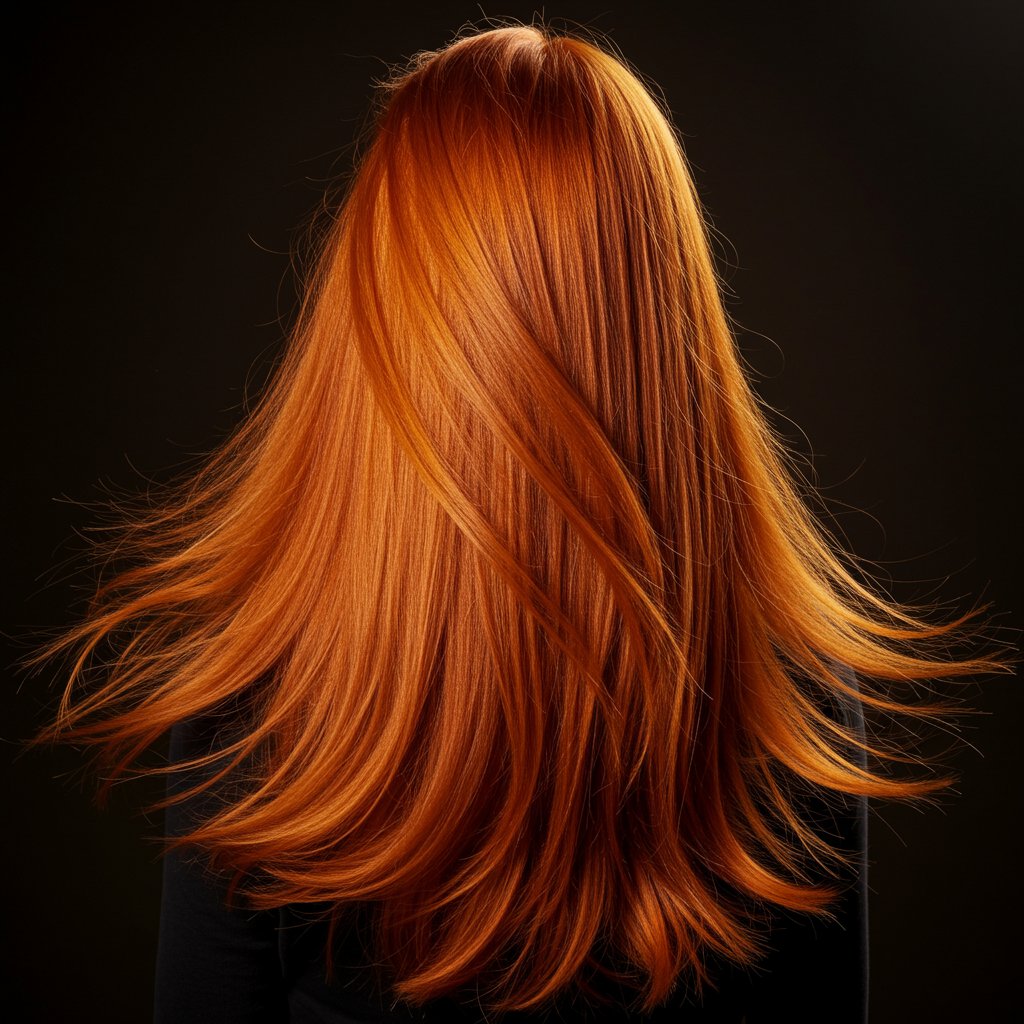
Slithering is a closely related technique, often used interchangeably with slide cutting, though some stylists differentiate it as being slightly more delicate. Both methods require an expert hand and extremely sharp shears to avoid snagging or damaging the hair cuticle. When performed correctly, these techniques are perfect for thick or coarse hair that needs significant de-bulking without sacrificing length. They can also be used on straight or wavy hair to add texture and prevent the ends from appearing too heavy or blunt. The beauty of slide cutting lies in its subtlety; it creates internal shape and movement that appears entirely natural.
However, this technique is generally not recommended for very fine or heavily damaged hair, as it can sometimes accentuate thinning ends or cause frizz if not executed flawlessly. A thorough consultation with an experienced professional is key. They will assess your hair's density, texture, and condition to determine if slide cutting is the appropriate method to achieve your desired outcome. When it is the right choice, the technique delivers a sophisticated, high-end finish that is both beautiful and remarkably low-maintenance.
Razor cutting is a highly artistic technique that produces a unique texture unattainable with shears alone. Using a straight-edge or guarded razor, a stylist carves into the hair, creating ends that are tapered, soft, and diffused. Unlike the clean cut of a scissor, a razor removes hair at a sharp angle, resulting in a wispy, feathered effect that is synonymous with 'lived-in', effortless styles. This method excels at creating movement, removing bulk, and adding a significant amount of texture, making it a favorite for shags, piecey pixies, and modern mullets.
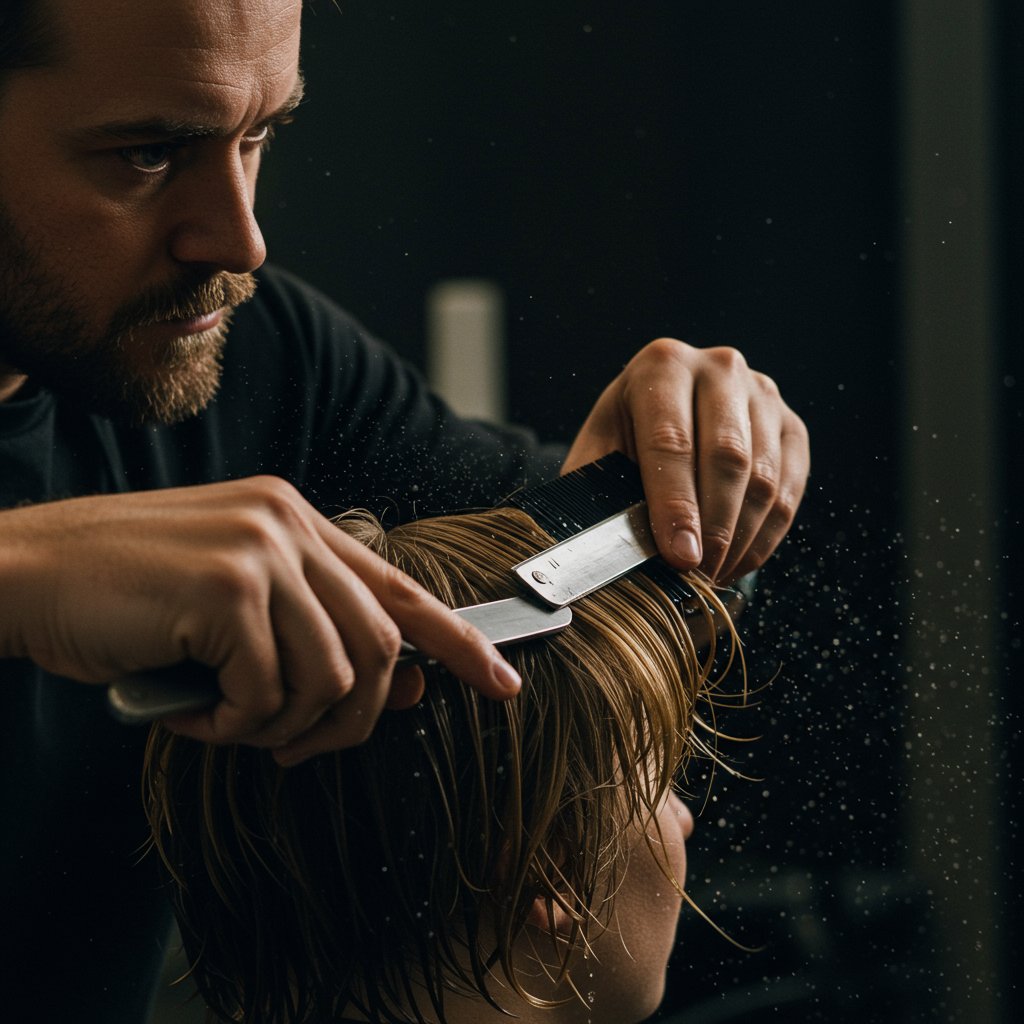
The key to a successful razor cut is the stylist's skill and the condition of the hair. This technique should always be performed on wet hair to allow the blade to glide smoothly and minimize friction, which can otherwise damage the hair cuticle and lead to split ends or frizz. An experienced stylist knows exactly how much pressure to apply and at what angle to cut to achieve the desired effect without compromising the hair's integrity. The razor is not a one-size-fits-all tool; it's best suited for medium to thick, straight or wavy hair. On very fine hair, it can sometimes remove too much weight, making the ends appear sparse. Similarly, on very curly hair, it can disrupt the curl pattern and cause unwanted frizz.
When executed properly, a razor cut grows out beautifully, with soft lines that don't become harsh or chunky over time. It gives the hair an airy, almost ethereal quality, allowing it to move with incredible lightness. If you're seeking a style with a lot of internal texture and a soft, shattered perimeter, discussing a razor cut with your stylist could be the key to unlocking a whole new dimension for your hair.
While many texturizing techniques focus on the ends of the hair, channel cutting and interior layering work their magic from within the haircut itself. These are truly advanced methods for manipulating weight and creating volume in a way that is completely invisible from the surface. Channel cutting involves the stylist using the shears to cut small, parallel 'channels' or sections of hair out from the interior. This creates pockets of space within dense areas, allowing the hair to collapse into itself for a softer, more manageable shape and enhanced movement. It's an incredibly effective way to de-bulk very thick hair without creating visible layers.
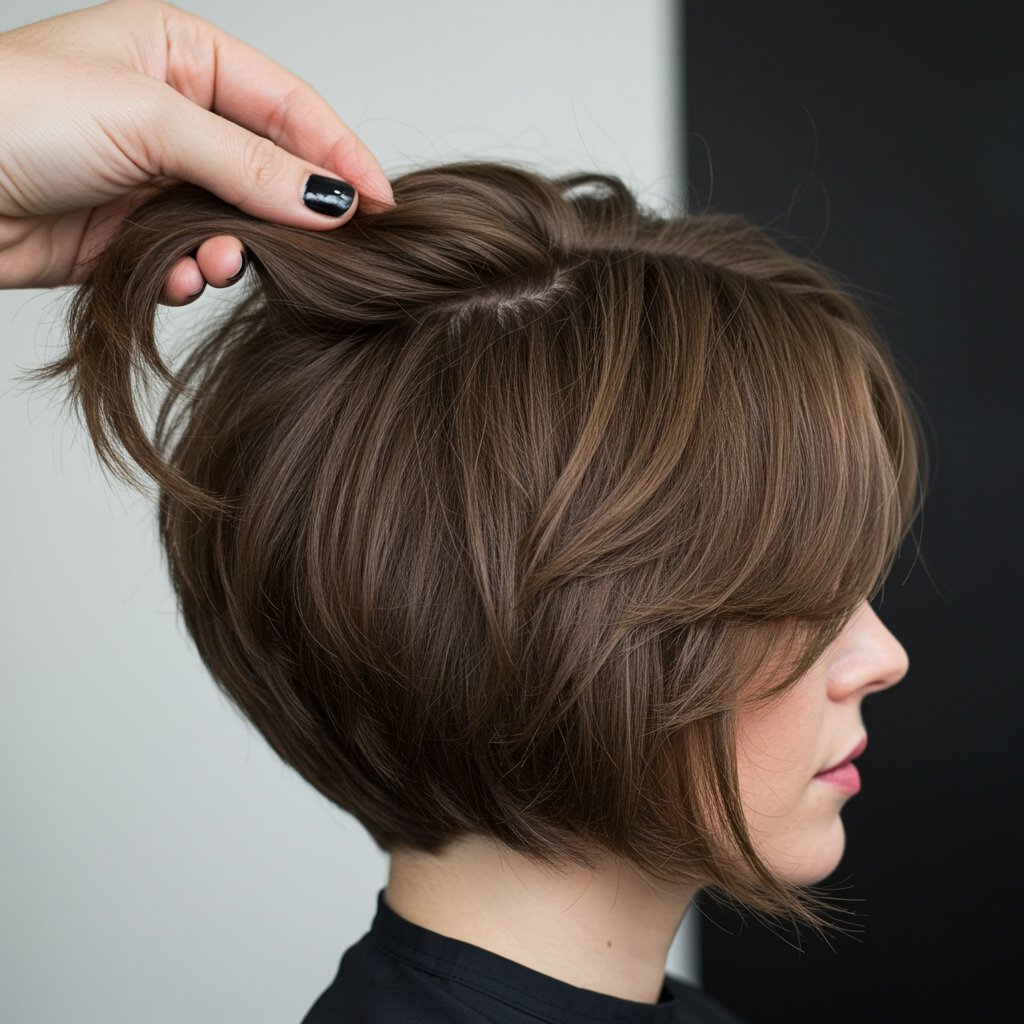
Interior layering, sometimes called 'invisible layering,' is another brilliant technique for building volume, especially in fine or medium-density hair. The stylist cuts shorter layers underneath the longer, external layers of the haircut. These hidden shorter pieces act as a scaffold, pushing the longer hair up and away from the scalp, creating natural lift and body at the crown and throughout the style. The beauty of this method is that it creates the illusion of fuller, more voluminous hair while maintaining a solid, one-length appearance on the surface. It's the perfect solution for someone who wants the benefits of layering without the layered look.
These internal cutting techniques are a testament to the architectural approach that master stylists take. They understand that a great haircut is built from the inside out. By strategically removing or adding support within the body of the hair, they can solve common problems like 'triangle head' in curly hair, flat crowns in long hair, or excessive bulk in thick bobs. These methods require a deep understanding of hair density and head shape, making them a true mark of a highly skilled professional.
Working with naturally curly and wavy hair requires a unique set of skills, and twist cutting is a specialized technique designed to honor and enhance these beautiful textures. As the name suggests, this method involves taking small sections of hair, twisting them tightly from root to tip, and then cutting into the twisted section with shears. The stylist may snip along the length of the twist or just at the ends, depending on the desired outcome. This technique is brilliant because it works with the hair's natural curl families or clumps.
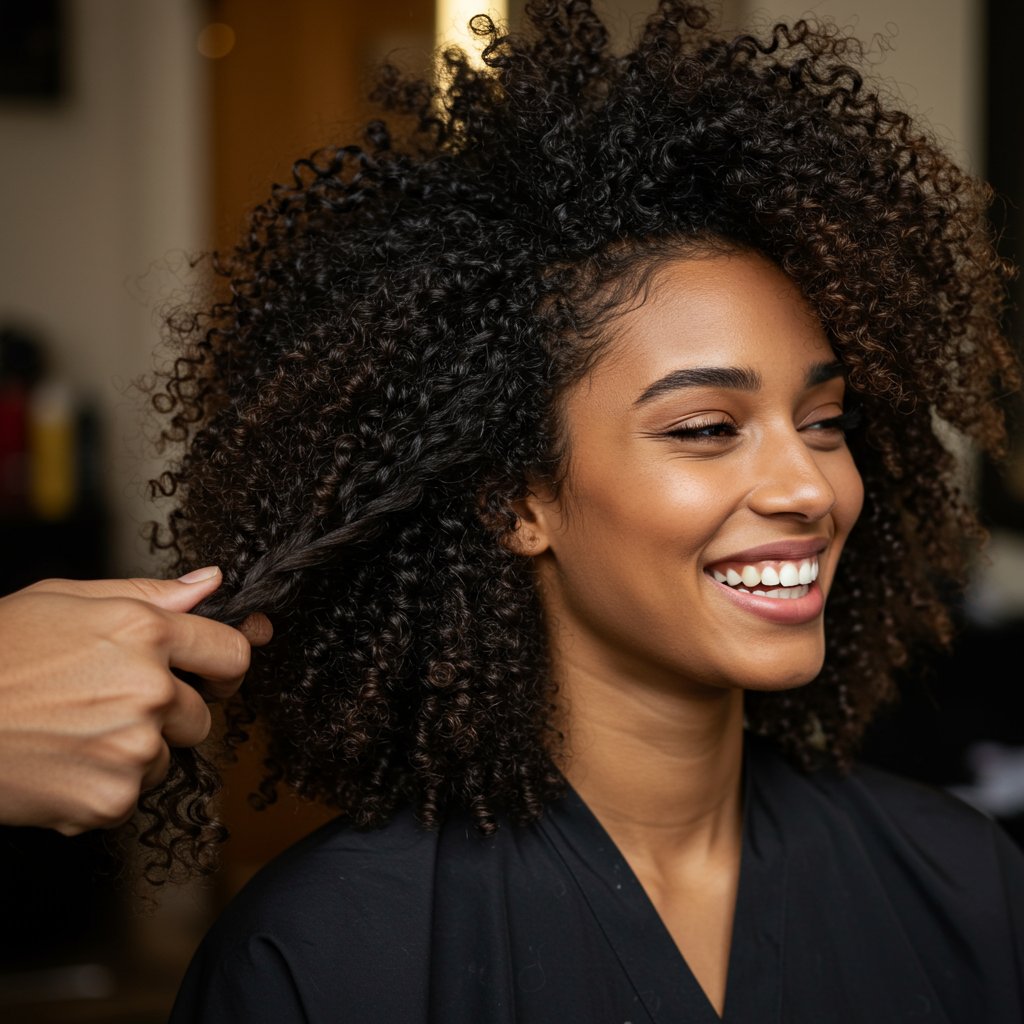
The primary benefit of twist cutting is its ability to create controlled texture and definition while reducing bulk. By cutting into the twisted strand, the stylist creates subtle variations in length within each curl, which helps the curls to interlock and stack beautifully rather than forming a solid, bulky shape. This method is excellent for preventing the dreaded 'pyramid' effect and encouraging natural volume at the roots and throughout the style. It also helps to create beautifully defined, frizz-free ends, as it removes any damaged or straight pieces that might be disrupting the curl pattern.
This technique is often performed on dry hair, allowing the stylist to see exactly how each curl lives and falls. This 'curl-by-curl' approach ensures that the final shape is perfectly tailored to the individual's unique curl pattern. For anyone with wavy, curly, or coily hair looking to embrace their natural texture, twist cutting can be a game-changer, resulting in a haircut that is both structured and full of life, movement, and personality.
The debate between cutting hair wet or dry is a long-standing one in the salon world, but when it comes to advanced texturizing, dry cutting often takes center stage. While wet cutting is excellent for establishing a strong, precise baseline and perimeter, cutting the hair dry allows the stylist to see the hair in its natural state. They can observe its true texture, cowlicks, density, and how it falls and moves. This immediate visual feedback is invaluable for personalization and detail work.
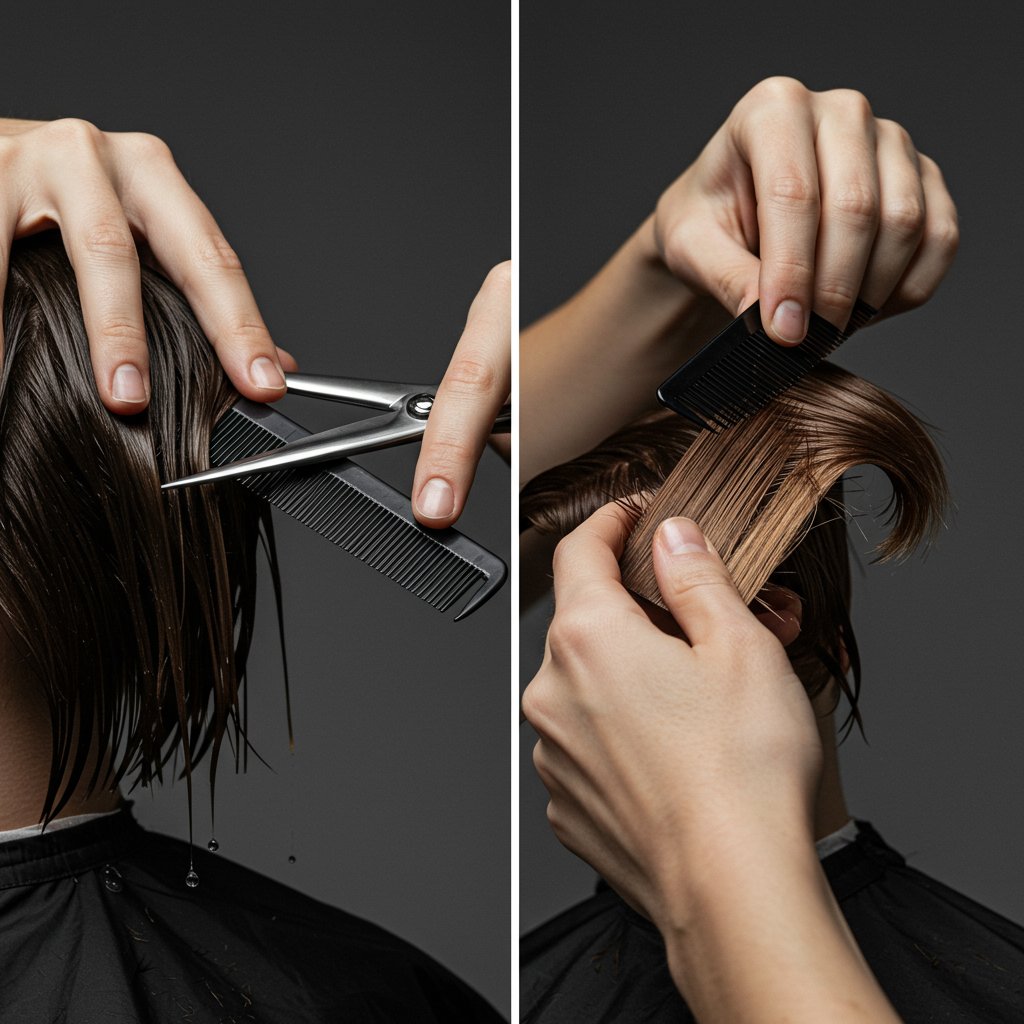
Most advanced cutting techniques, such as deep point cutting, slide cutting, and razor work, can be performed on wet hair, but finishing and refining the style on dry hair allows for a higher level of artistry. A stylist can use dry cutting to visually carve out the shape, soften specific areas, and ensure the texture is perfectly balanced. It's like sculpting—the initial form is created when wet, but the fine-tuning and detailing happen once the material is in its final state. This is especially crucial for curly hair, where cutting wet can be deceptive due to shrinkage.
A popular approach among top stylists is a combination method: establishing the main shape on wet hair and then, after blow-drying, using a variety of dry-cutting techniques to texturize and personalize the look. This hybrid approach offers the best of both worlds—the precision of wet cutting and the artistic freedom of dry cutting. Ultimately, the choice depends on the hair type, the desired style, and the stylist's expertise, but an understanding of the benefits of dry cutting is essential for anyone seeking a truly bespoke, textured hairstyle.
A professional, textured haircut provides an excellent foundation, but the right at-home care and styling routine will make it truly shine. The key is to use products that enhance the texture your stylist worked so hard to create. Start with a lightweight shampoo and conditioner that won't weigh your hair down. After washing, gently towel-dry your hair to avoid creating frizz.
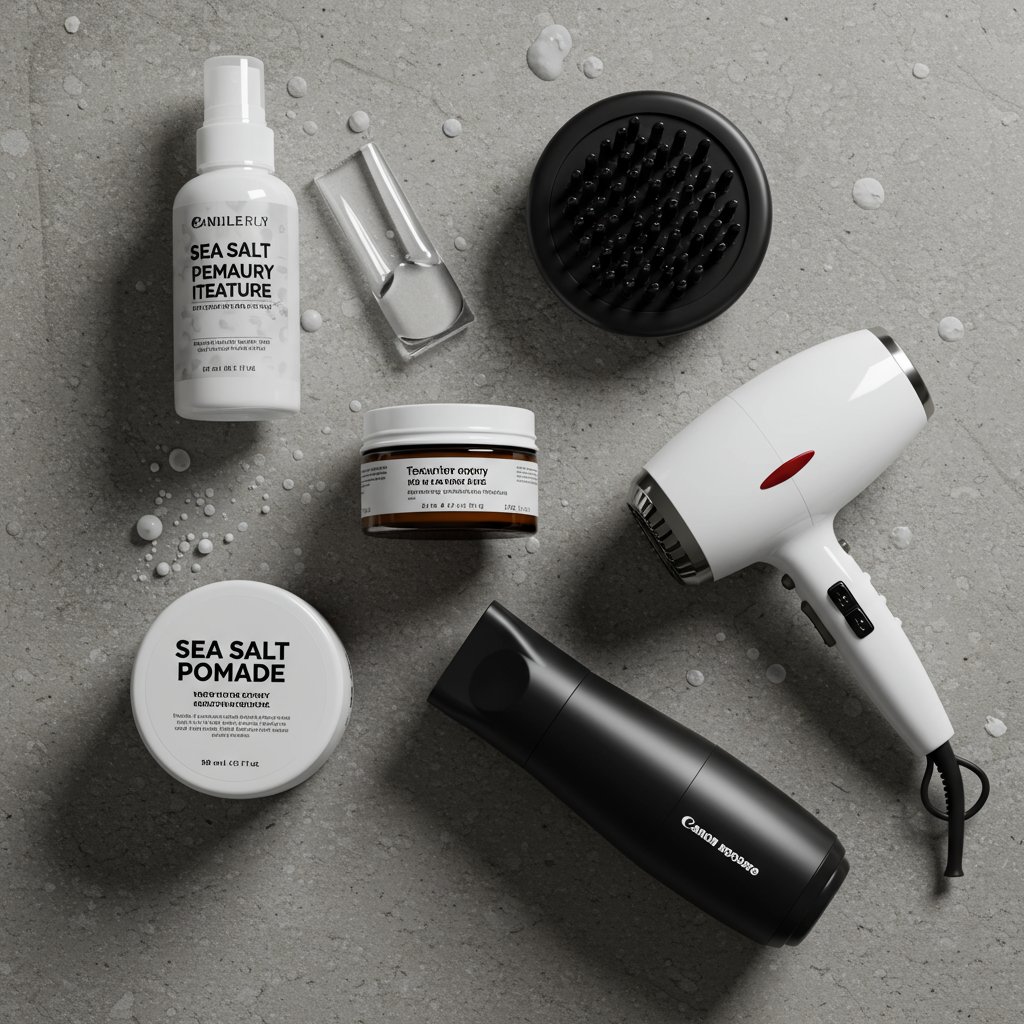
When it comes to styling, less is often more. For a lived-in, airy look, apply a sea salt or texturizing spray to damp hair and let it air-dry or use a diffuser on a low heat and speed setting. A diffuser is crucial for curly hair, as it encourages curl formation without blowing them apart. For added separation and definition on shorter styles or layered ends, work a small amount of matte pomade, wax, or texture paste through your dry hair, focusing on the mid-lengths and ends. Remember to start with a tiny amount of product and build up as needed. Over-saturating the hair can make it look greasy and destroy the movement.
To keep your textured cut looking its best, regular trims are essential. Textured styles, especially those with soft, wispy ends, can lose their shape as they grow. Plan to visit your salon every 6-10 weeks, depending on your hair's growth rate and the specific style. This will maintain the integrity of the cut, remove split ends, and keep your hair looking healthy, dynamic, and full of life.
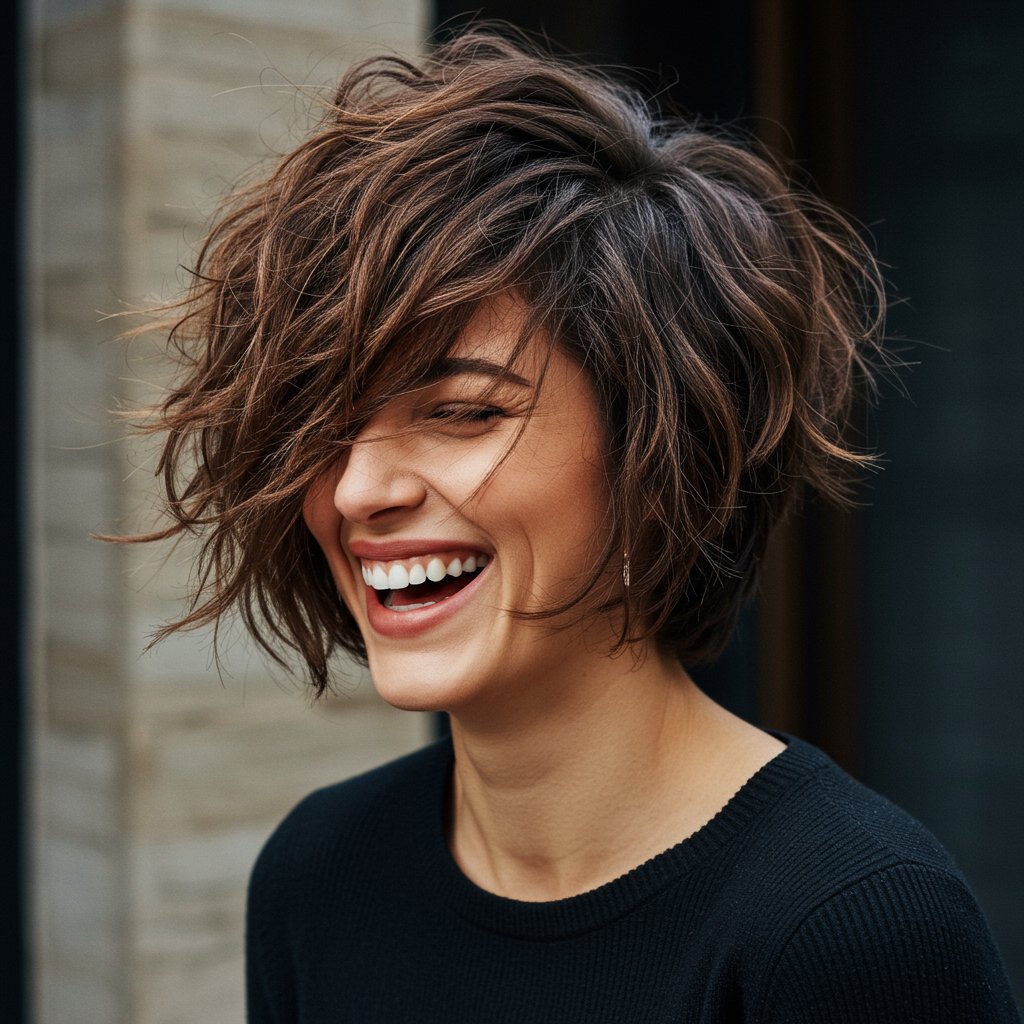
Advanced cutting techniques are more than just a method; they are an art form that transforms hair into a medium of self-expression. By moving beyond simple, one-length cuts and embracing the world of texture and movement, you unlock a new level of personalization and style. Techniques like point cutting, slide cutting, and interior layering are the tools that allow a stylist to sculpt a look that is uniquely yours—one that complements your features, works with your natural hair texture, and fits your lifestyle.
The journey to your perfect haircut begins with a conversation. By understanding the possibilities that these advanced methods offer, you can better collaborate with your stylist to achieve the hair of your dreams. Don't be afraid to ask about their preferred techniques and to discuss your desire for more volume, less bulk, or softer lines. A great haircut should feel as good as it looks, moving with a life and energy all its own. It's time to let your hair's true personality shine through with a beautifully crafted, expertly textured style.
Download our app to instantly see how you'd look with any hairstyle or color
Get the App
12 min read

12 min read

14 min read